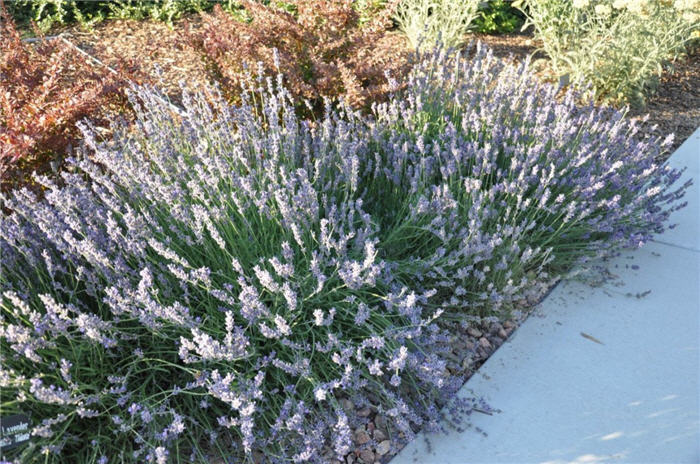| Botanical Name: Lavandula angustifolia 'Lavance Purple' | |
| Common Name: Lavance Purple English Lavender |

-
Anatomy
-
Culture
-
Design
Plant Type
Shrub, Perennial, Herb
Height Range
Under 1'
Flower Color
Purple
Flower Season
Summer
Leaf Color
Grey
Bark Color
Grey
Fruit Color
n/a
Fruit Season
n/a
Sun
Full
Water
Low
Growth Rate
Moderate
Soil Type
Sandy, Clay, Loam, Rocky, Unparticular
Soil Condition
Average, Poor, Dry
Soil pH
Neutral
Adverse Factors
Attracts Bees
Design Styles
English Cottage, Formal, Mediterranean, Ranch
Accenting Features
Fragrance, Showy Flowers
Seasonal Interest
Summer
Location Uses
Perennial Border, Parking Strip, Walkways, With Rocks
Special Uses
Cut Flowers, Hedge, Fire Resistant, Small Spaces
Attracts Wildlife
Hummingbirds, Butterflies
Information by: Stephanie Duer
Photographer:
Photographer:
-
Description
-
Notes
A smaller, compact lavender well suited to small gardens and parkstrips. Dense foliage is greenish-grey and very aromatic. Deep purple flowers appear early to late summer (deadheading will prolong the bloom period). Foliage may be semi-evergreen in milder winters. Very fragrant flowers are excellent cut for arrangements or dried.
Lavenders thrive in full sun and poor soils, though a little kindness will be rewarded with a bounty of flowers. Plant in well-drained soil. Cut back 1/3 to 1/2 size in spring when new growth begins to emerge. Does not like to be divided, though sometimes stems that touch the ground will root, and these can be snipped from the parent plant and transplanted. Deer resistant.